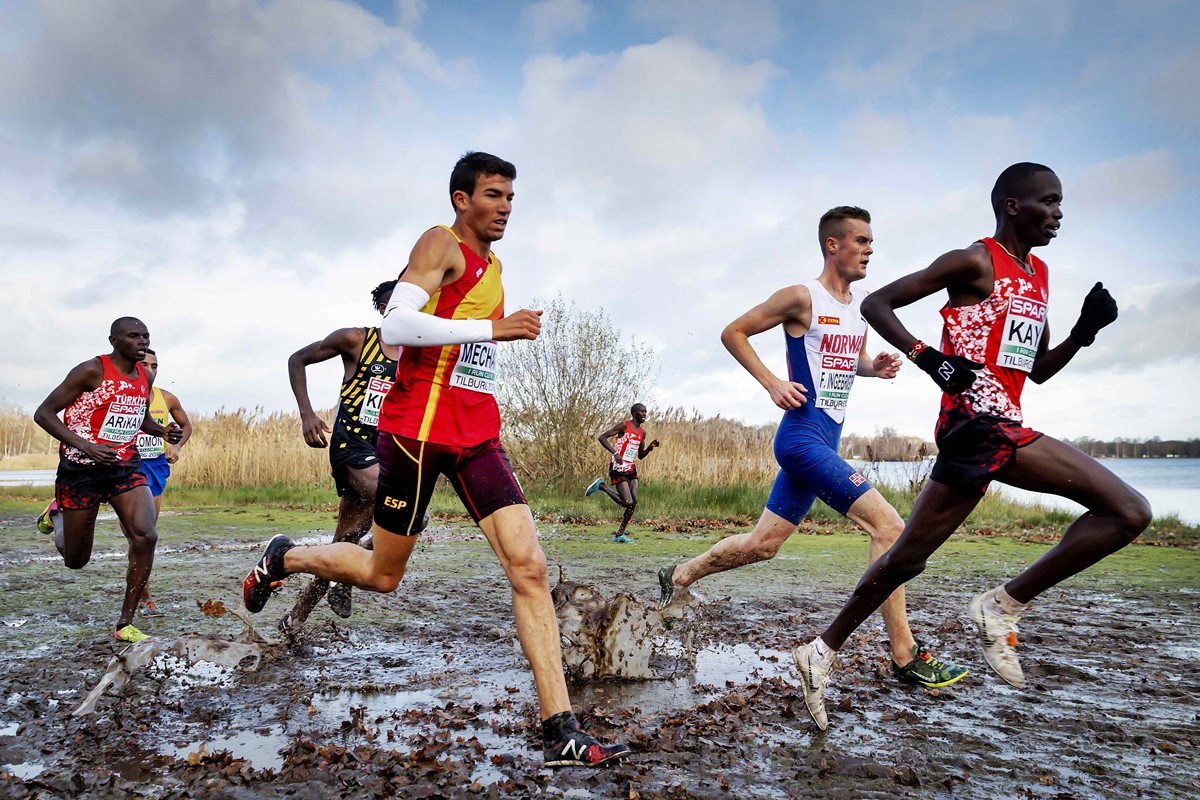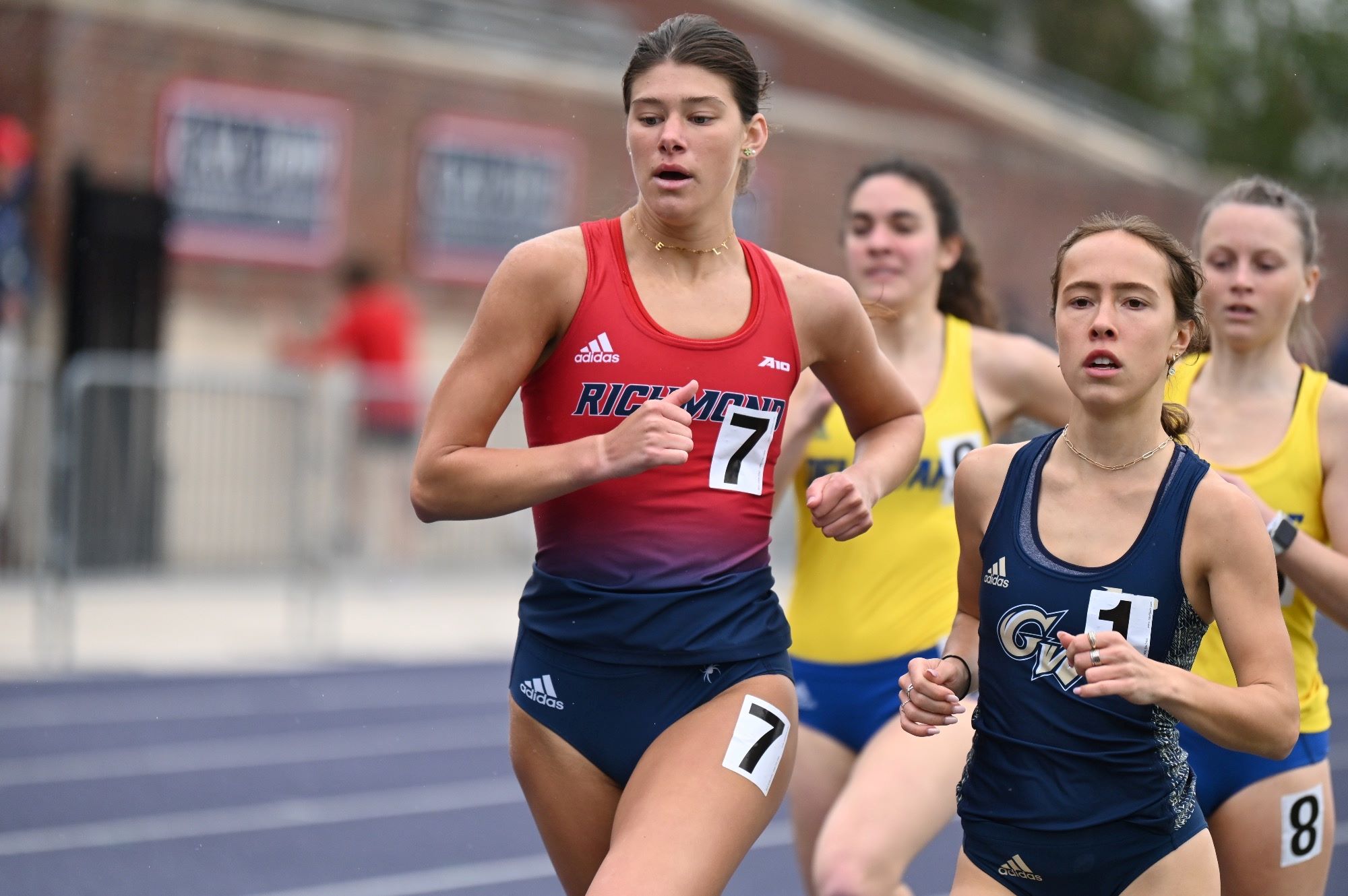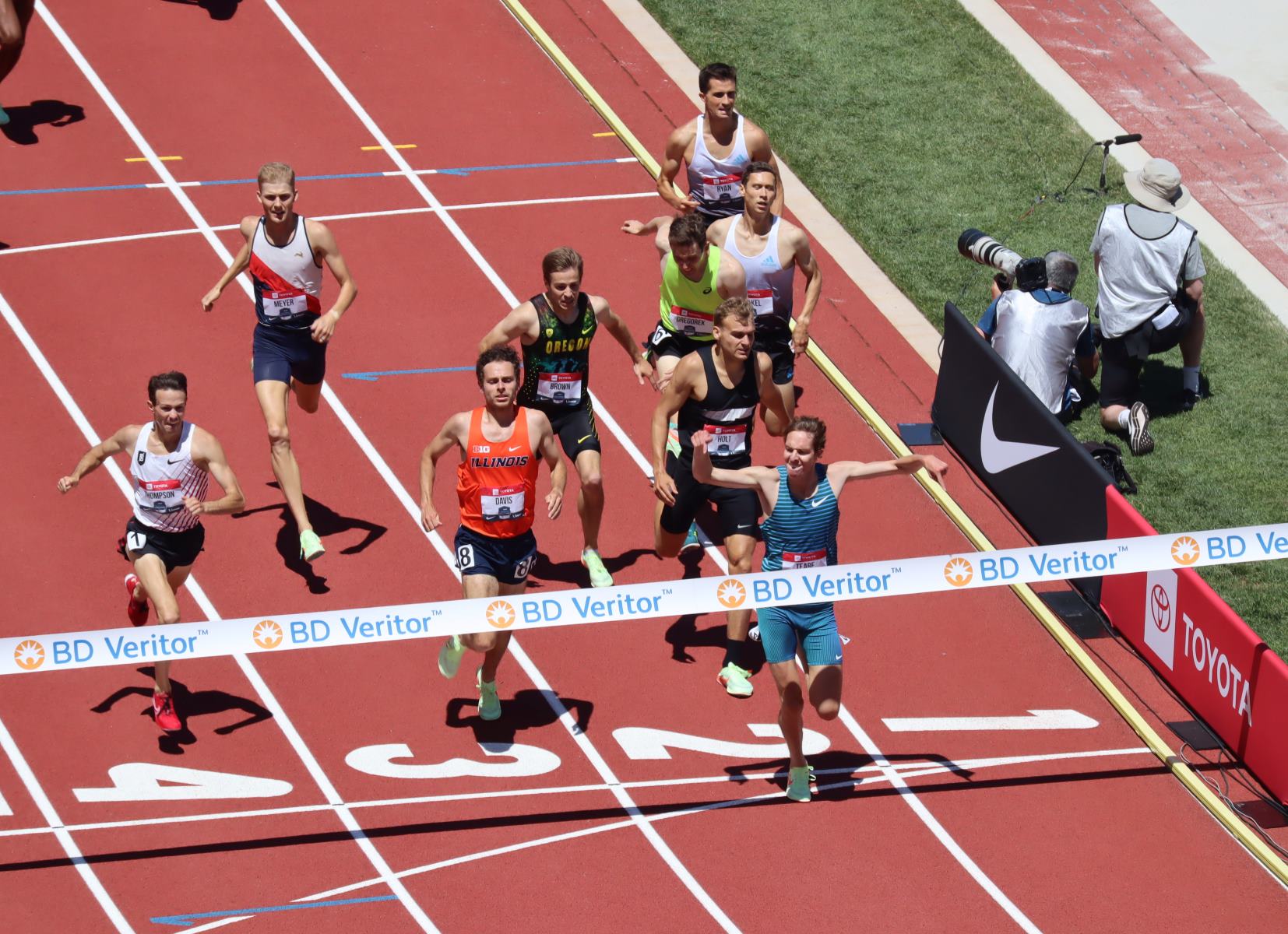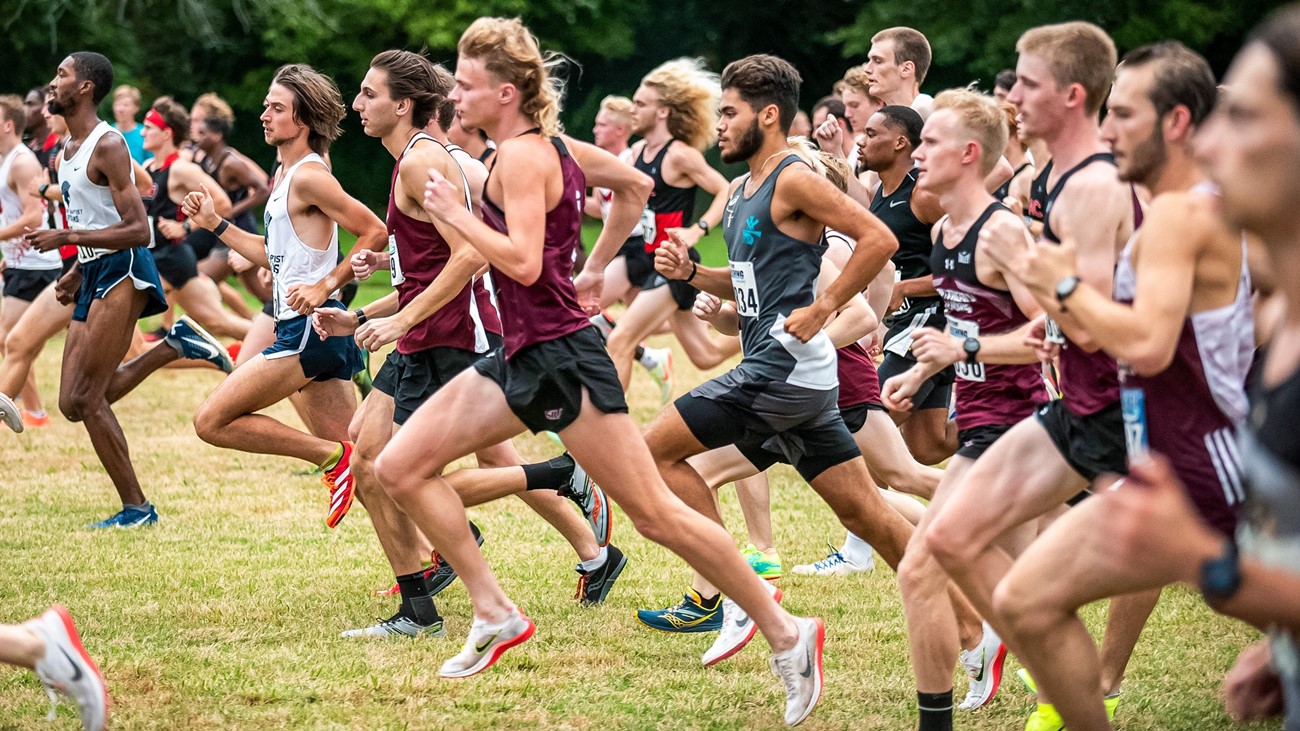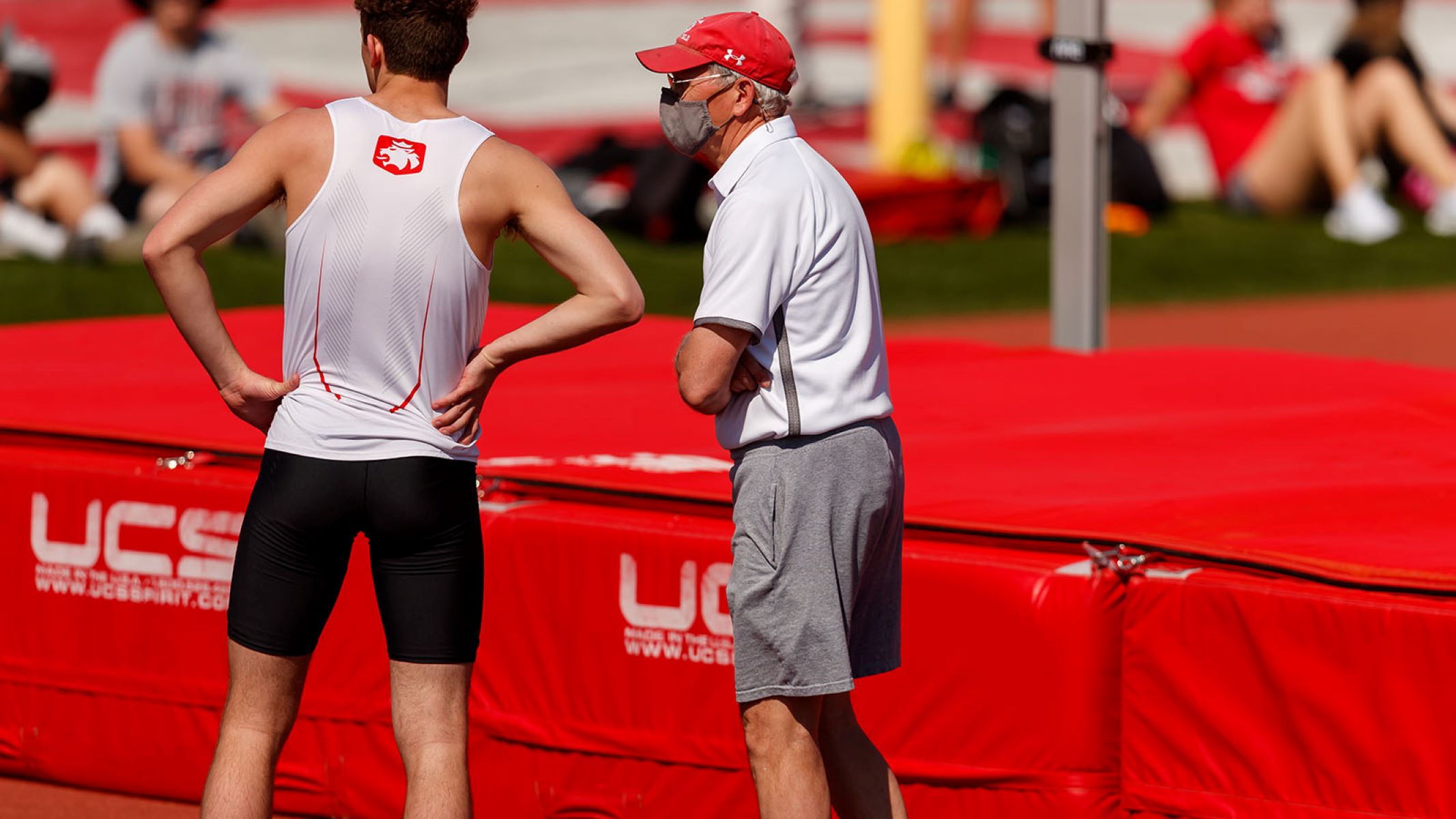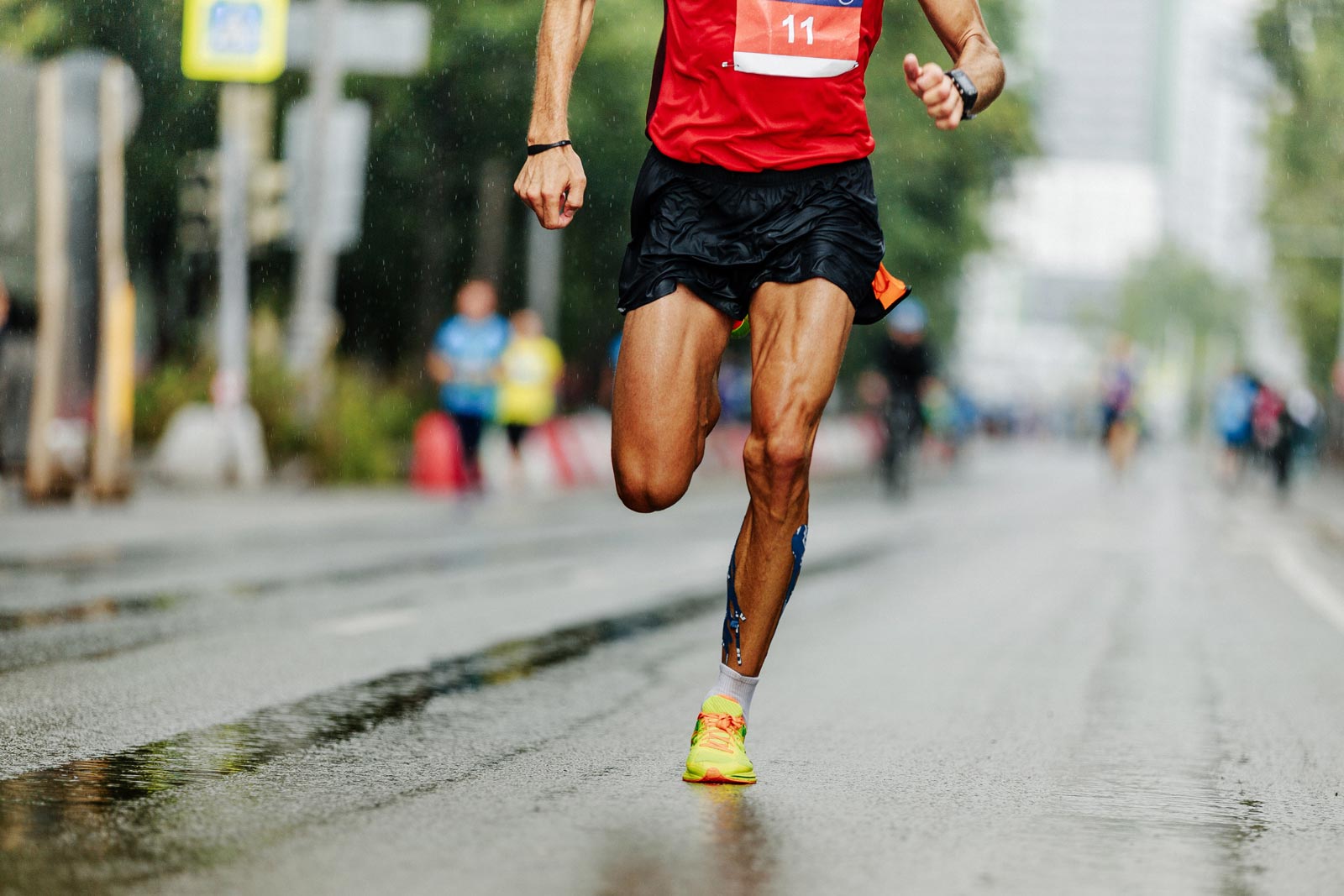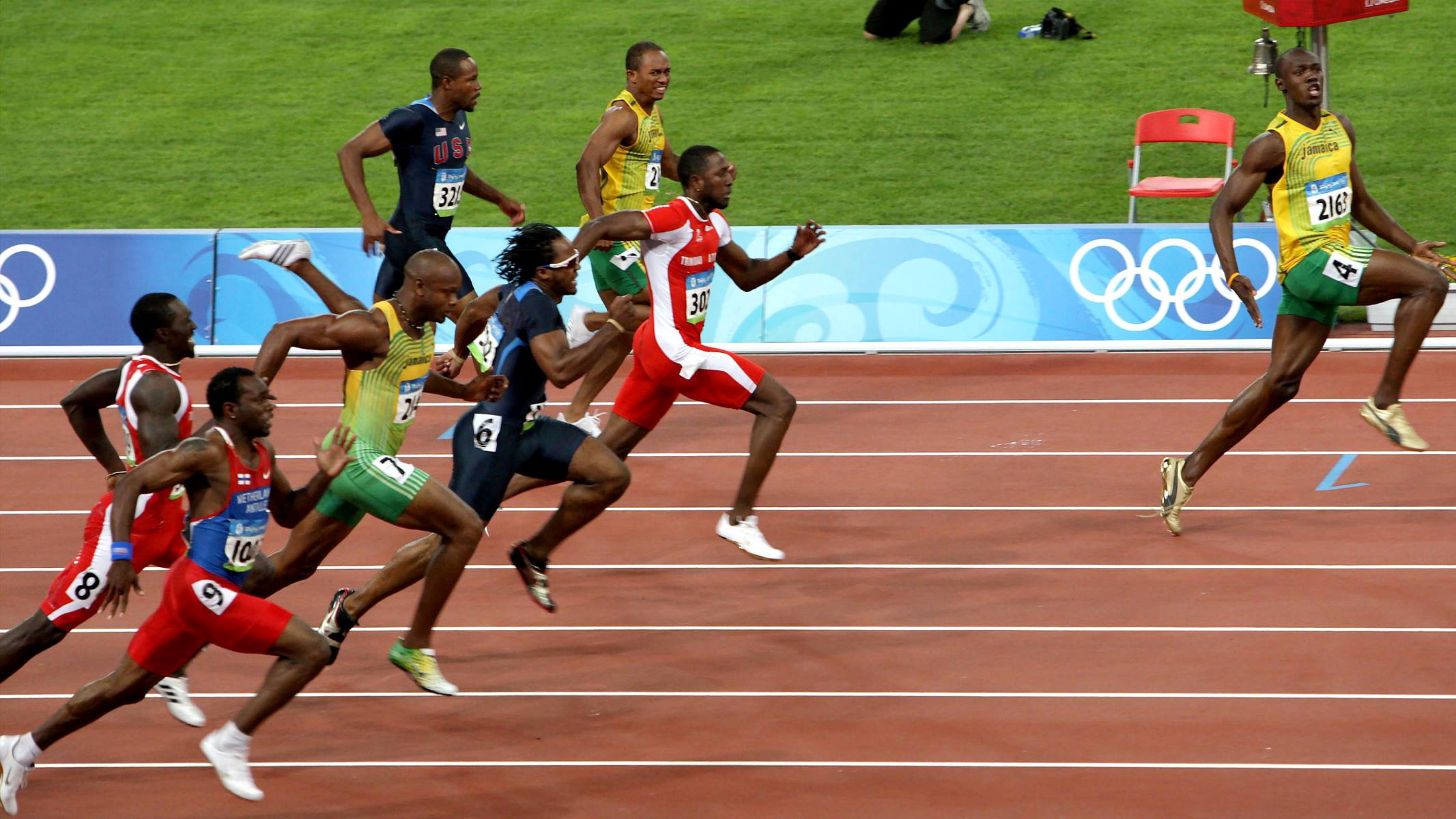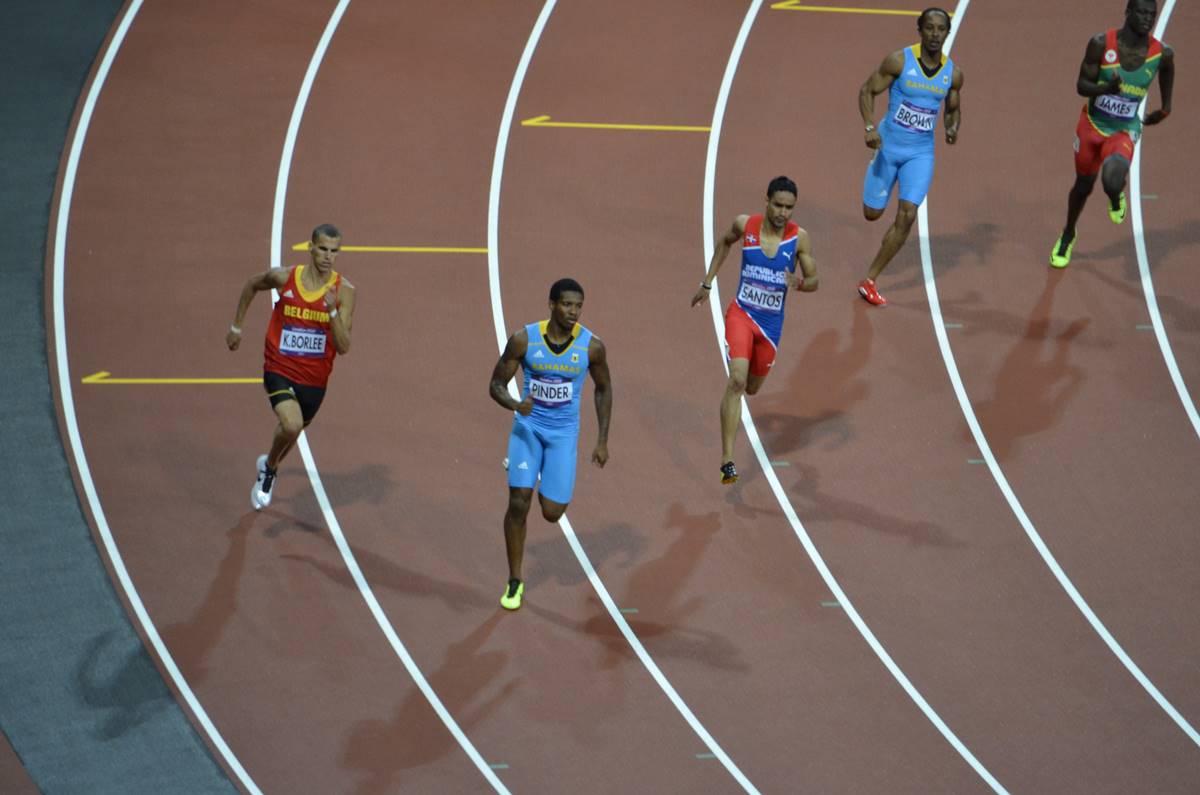

Featured
How To Pace An 800M
Modified: January 2, 2024
Learn the best pacing strategies for an 800m race in this featured guide. Improve your performance and reach new personal records.
Introduction
The 800m race is a challenging track event that requires a combination of speed, endurance, and strategic pacing. It is a unique race that lies at the intersection between sprinting and middle-distance running. In this article, we will explore the art of pacing in the 800m race and provide you with valuable insights on how to execute an effective race strategy.
Successfully pacing the 800m race can be the difference between finishing strong or hitting a wall too soon. It requires a delicate balance of conserving energy in the early stages while maintaining a strong and consistent pace throughout.
In this article, we will delve into the various aspects of pacing in the 800m race, including how to prepare for the race, determining your target pace, strategies for each section of the race, mental strategies to maintain pace, and tips for practicing and improving your pacing abilities.
Whether you are a seasoned 800m runner looking to improve your performance or a beginner who wants to understand the intricacies of pacing, this article will provide you with the knowledge and insights you need to maximize your race potential.
So, lace up your running shoes and prepare to dive into the world of effective pacing in the 800m race!
Understanding the 800M Race
The 800m race, also known as the half-mile race, is a two-lap event that requires a unique combination of speed and endurance. It is often regarded as one of the most challenging races in track and field due to its demands on both anaerobic and aerobic energy systems.
Unlike shorter sprints where athletes explode off the blocks and maintain maximum effort throughout, the 800m race requires runners to carefully pace themselves in order to avoid burning out before the finish line. It is a race that demands strategic planning and execution.
The first lap of the 800m race is typically run at a faster pace compared to the second lap. Runners need to find a balance between conserving energy early on and positioning themselves for a strong finish. It is crucial to understand how to distribute energy wisely and make calculated decisions throughout the race.
Not only does the 800m race require physical stamina, but it also tests an athlete’s mental fortitude. Sustaining a fast pace for two laps can be mentally challenging, as runners must push through fatigue and maintain focus. It is a race that requires both physical and mental resilience.
Understanding the nuances of the 800m race is essential for developing a strategic approach. It involves analyzing the strengths and weaknesses of your competitors, identifying key moments to make a move, and adapting to the race conditions as they unfold.
By understanding the unique demands of the 800m race, you can tailor your training and race strategies accordingly. This includes developing speed, endurance, and pacing abilities, as well as refining your race tactics to gain a competitive edge.
In the next sections of this article, we will explore the importance of pacing in the 800m race and provide you with practical tips and strategies on how to effectively manage your pace throughout the race. So, let’s dive deeper into the art of pacing in the 800m race!
Importance of Pacing in the 800M
Pacing is a critical factor in the 800m race, as it determines how an athlete’s energy is distributed throughout the two laps. Proper pacing can mean the difference between a strong finish and a premature burnout.
One of the primary reasons pacing is crucial in the 800m race is the balance between anaerobic and aerobic energy systems. The race requires a combination of speed and endurance, which means runners must avoid depleting their energy reserves too quickly. Starting too fast can lead to early fatigue, while starting too slow can result in an inability to catch up to competitors.
Effective pacing allows athletes to conserve energy in the first lap, giving them the necessary reserves to accelerate and maintain a strong pace in the second lap. It allows them to carefully distribute their efforts, optimizing their performance over the entire race.
In addition to energy conservation, pacing also plays a crucial role in positioning within the race. By understanding the desired target pace, runners can strategically position themselves among their competitors. They can gauge when to make moves, when to conserve energy, and when to push for a strong finish.
Pacing is not only a physical aspect but also a mental one. It requires discipline, focus, and the ability to make split-second decisions during the race. Maintaining a consistent pace can help runners stay mentally engaged and avoid being overwhelmed by the challenges of the race.
Another key aspect of pacing is managing race conditions. On hot and humid days, runners may need to adjust their pace to account for the additional strain on their bodies. Similarly, windy conditions can impact race tactics, requiring runners to adjust their pacing strategy accordingly.
By understanding the importance of pacing, athletes can develop a race plan that allows them to maximize their performance and achieve their full potential in the 800m race. It is a skill that requires practice, experience, and adaptability.
In the next sections, we will delve into how you can prepare for the 800m race and determine your target pace. We will also explore strategic pacing strategies for each section of the race, as well as mental strategies to maintain pace and tips for practicing and improving your pacing abilities. So, let’s continue our journey into the art of pacing in the 800m race!
Preparing for the 800M Race
Preparing for the 800m race requires a combination of physical conditioning, mental preparation, and strategic planning. By following a comprehensive training regimen, athletes can enhance their speed, endurance, and pacing abilities, giving them an edge on race day.
One of the key aspects of preparation is developing a solid aerobic base. This involves incorporating long-distance runs into your training routine to build endurance. By improving your aerobic capacity, you can sustain a faster pace for a longer period of time in the 800m race.
In addition to aerobic conditioning, it’s crucial to include speed workouts in your training program. These workouts can consist of interval training, such as repeated 400m or 800m runs at target race pace, as well as shorter sprints to improve overall speed and explosiveness.
Strength training is another important component of preparation for the 800m race. Focusing on exercises that target the lower body, such as squats, lunges, and calf raises, can help build muscular strength and power, which is essential for maintaining an optimal pace during the race.
Aside from physical conditioning, mental preparedness is equally important. Visualizing yourself executing a well-paced race, imagining the feeling of maintaining a strong pace, and mentally rehearsing strategies for each section of the race can boost your confidence and improve your ability to execute on race day.
Strategic planning is also vital in preparing for the 800m race. Develop a pacing strategy that takes into account your current fitness level, race goals, and the competition you’ll be facing. Consider your strengths and weaknesses, and create a plan that plays to your strengths while addressing any areas of improvement.
Furthermore, familiarize yourself with the racecourse and any potential challenges it may present. Understand where the curves are, identify any potential wind effects, and plan your pacing strategy accordingly. This knowledge will allow you to make informed decisions during the race, helping you maintain an optimal pace.
Lastly, ensuring you have the right equipment is essential. Invest in quality running shoes that provide support and comfort, as well as appropriate clothing for different weather conditions. Having the right gear can enhance your performance and contribute to a more enjoyable racing experience.
By focusing on physical conditioning, mental preparedness, strategic planning, and having the right equipment, you’ll be well-prepared to tackle the 800m race. In the next sections, we will explore how to determine your target pace, strategies for each section of the race, and tips for maintaining pace and improving your pacing abilities. So, let’s continue our journey towards mastering the art of pacing in the 800m race!
Determining Your Target Pace
One of the keys to pacing effectively in the 800m race is determining your target pace. Your target pace should be based on your current fitness level, race goals, and the specific demands of the race.
To determine your target pace, start by assessing your current fitness level. Look at your recent race times and training performances to get a sense of your current speed and endurance. This will serve as a baseline for setting your target pace.
Next, establish your race goals. Are you aiming to set a personal best, qualify for a higher level of competition, or simply finish the race strong? Your goals will influence your target pace, as more ambitious goals may require a faster pace.
Additionally, consider the competition you’ll be facing. Research the expected finishing times of your competitors and the strategies they typically employ. This information can help you gauge the level of competition and determine a target pace that places you in a favorable position to contend.
Another factor to consider in determining your target pace is the specific demands of the 800m race. Consider the balance between speed and endurance required for the race. As a general guideline, aim for a slightly faster pace in the first lap to establish a good position, and then aim to maintain a strong, consistent pace in the second lap.
Once you have a sense of your fitness level, race goals, competition, and the demands of the race, you can start establishing your target pace. A good way to calculate your target pace is to break down your goal finishing time into smaller, manageable splits for each lap.
For example, if your goal is to finish the race in 2 minutes, you can aim for a target pace of 60 seconds for the first lap and 60 seconds for the second lap. Adjust these numbers according to your specific goals and abilities.
It’s important to note that your target pace should be challenging, yet realistic. Pushing yourself too hard right from the start or setting an overly ambitious pace can lead to exhaustion and a significant drop in performance. Conversely, setting a pace that is too conservative may result in missed opportunities to make strategic moves and achieve your goals.
Once you have determined your target pace, use it as a guiding principle during your training sessions. Practice running at your target pace during interval training, tempo runs, and race simulations to build familiarity and confidence.
In the next sections, we will explore specific strategies for pacing the different sections of the 800m race. By combining your target pace with these strategies, you’ll be well-equipped to maintain a strong and consistent pace throughout the race. So, let’s continue our journey towards mastering the art of pacing in the 800m race!
Strategies for Pacing the First 200M
The first 200m of the 800m race is a crucial segment that sets the tone for the rest of the race. It’s important to approach this section with a strategic mindset and make pacing decisions that position you for a strong finish.
One effective strategy for pacing the first 200m is to start with controlled aggression. You want to establish a good position in the race without expending too much energy too soon. Avoid the temptation to go all out in the first few strides as it may lead to an early burnout.
Instead, aim to settle into your target pace within the first 100m. Find a comfortable rhythm that allows you to maintain a strong and consistent pace. Focus on running smooth, relaxed strides and maintain proper form.
Another key aspect of pacing the first 200m is positioning yourself in the race. Pay attention to the positioning of your competitors and aim to be in a favorable position close to the front or towards the inner lanes. This will give you better control over the race and allow you to make strategic moves when needed.
One strategy to consider is using the “drafting” technique. Stay close behind a runner who has a similar pace or is slightly faster to conserve energy and reduce wind resistance. This can provide a slight advantage in the early stages of the race, allowing you to conserve energy for later.
Maintaining mental focus is essential during the first 200m. As adrenaline kicks in and the race starts to unfold, it’s important to stay composed and execute your pacing plan. Avoid getting caught up in the excitement and preserve your energy for the upcoming sections.
Finally, be prepared to make adjustments if necessary. Sometimes, race conditions or the tactics of other competitors may require you to adapt your pacing strategy. Trust your instincts and make calculated decisions to ensure that your first 200m sets you up for a successful race.
By employing these strategies, you can effectively pace the first 200m of the 800m race. Remember to start with controlled aggression, find your target pace, position yourself strategically, stay focused, and be adaptable. In the next section, we will explore strategies for managing the middle section of the race. So, let’s continue our journey towards mastering the art of pacing in the 800m race!
Managing the Middle Section of the Race
The middle section of the 800m race, typically between the 200m and 600m mark, is where runners must maintain their pace and make strategic decisions to stay competitive. It’s crucial to navigate this section effectively to set yourself up for a strong finish.
One key strategy for managing the middle section of the race is maintaining a consistent pace. Aim to stay as close as possible to your target pace, ensuring that you neither slow down significantly nor increase your speed too early. This requires mental focus and discipline, as the lactic acid buildup and fatigue can start to set in.
During this section, it’s important to anticipate and respond to any surges or changes in pace from your competitors. If an opponent makes a move to pass you, avoid panicking and breaking from your own pacing plan. Instead, assess the situation, stay composed, and make strategic decisions on when to respond and when to conserve energy.
Strategic positioning is also crucial during the middle section of the race. Stay aware of your competitors’ movements and maintain a good position that enables you to respond to any challenges. This may involve making calculated moves to maintain or improve your position while conserving energy for the final push.
Another strategy to consider is the “negative split” approach, where you aim to run a slightly faster second lap compared to the first. This can involve gradually increasing your speed during the middle section of the race, building momentum and passing competitors who may have started too fast and are starting to fade.
Mental toughness plays a significant role in managing the middle section of the race. This is where the physical and mental challenges of the 800m become more pronounced. Stay focused on your race plan, maintain a positive mindset, and use mental strategies such as visualization and positive self-talk to push through any fatigue or doubts.
Lastly, be aware of your effort level and manage it accordingly. As fatigue sets in, it’s crucial to maintain good running form and avoid unnecessary energy expenditure. Focus on efficient stride mechanics, stay relaxed yet powerful, and conserve energy for the final push.
By effectively managing the middle section of the 800m race, you set yourself up for a strong finish. Remember to maintain a consistent pace, respond strategically to competitors’ moves, position yourself well, stay mentally tough, and manage your effort level. In the next section, we will explore strategies for setting a strong pace in the final 200m. So, let’s continue our journey towards mastering the art of pacing in the 800m race!
Setting a Strong Pace in the Final 200M
The final 200m of the 800m race is where runners must dig deep, unleash their finishing kick, and set a strong pace to secure a successful race outcome. This section requires mental and physical resilience, as well as strategic decision-making to maximize performance.
One strategy for setting a strong pace in the final 200m is to increase your effort gradually. As you approach this section, you should start to pick up your speed, gradually building momentum to maintain a strong and consistent pace. Aim to maintain a cadence that feels sustainable while gradually increasing your speed to reach your maximum effort level towards the end.
Another key aspect of setting a strong pace in the final 200m is making strategic moves to surpass your competitors. Assess the race situation and identify the optimal time to make your move. This could mean accelerating past opponents on the curves or making a decisive surge on the straightaways. These strategic moves can help you gain a psychological advantage and physically break away from your competitors.
Maintaining a strong mental focus is crucial during this section. Fatigue and the physical demands of the race can start to impact your performance. Stay mentally tough, stay positive, and employ mental strategies such as visualization and positive self-talk to push through any discomfort and maintain a determined mindset.
Technique and form are also critical in the final 200m. Ensure that you maintain proper posture, drive your arms forward and back with power, and maintain a strong and efficient stride. This will optimize your running mechanics and help you maintain speed and momentum.
Additionally, be aware of the racecourse and any potential challenges it presents. Take advantage of the straightaways to open up your stride and build speed. On the curves, focus on maintaining good form and efficient pacing to minimize energy loss.
Finally, be prepared to give your maximum effort in the final stretch. Embrace the discomfort, push through any physical and mental barriers, and give it your all. Remember that this final burst of effort can make a significant difference in your finishing time and overall race performance.
By effectively setting a strong pace in the final 200m, you position yourself for a successful finish in the 800m race. Gradually increase your effort, make strategic moves, stay mentally focused, maintain good technique, and give your all in the final stretch. In the next section, we will explore mental strategies to maintain pace throughout the race. So, let’s continue our journey towards mastering the art of pacing in the 800m race!
Mental Strategies to Maintain Pace
Maintaining pace in the 800m race requires not only physical stamina but also mental resilience. The ability to stay focused, motivated, and disciplined throughout the race can make a significant difference in your performance. Here are some mental strategies to help you maintain pace and achieve your goals:
1. Positive self-talk: Use positive affirmations and self-talk to stay motivated and focused during the race. Remind yourself of your training, strengths, and abilities. Replace any negative thoughts with positive ones to boost confidence and maintain a strong mindset.
2. Visualization: Before the race, visualize yourself executing a well-paced race. Imagine each section of the race, from the start to the finish, and picture yourself maintaining a strong and consistent pace. Visualize the feeling of success and crossing the finish line with a satisfying performance.
3. Break the race into smaller segments: Instead of thinking about the entire 800m race, break it down into smaller sections. Focus on one lap at a time or divide it into quarters. By breaking it down, the race becomes more manageable mentally, and you can concentrate on maintaining pace for each segment.
4. Set and focus on process goals: While it’s essential to have an overall goal for the race, such as achieving a specific time or position, it’s equally important to set process goals. Focus on aspects within your control, such as maintaining a specific target pace, executing effective running form, or making strategic moves at certain points in the race. By focusing on these process goals, you can stay present and engaged in the race.
5. Embrace discomfort and embrace the challenge: The 800m race is physically demanding, and discomfort is inevitable. Embrace the discomfort as a sign that you are pushing yourself to your limits. Instead of trying to avoid or resist it, acknowledge it and use it as motivation to maintain pace and push through the barriers.
6. Stay present and in the moment: Avoid getting caught up in past performances or future outcomes. Stay focused on the present moment and the task at hand – maintaining pace. Be fully engaged in your race, paying attention to your form, breathing, and the cues from your body. By staying in the moment, you can make necessary adjustments and maintain a consistent pace.
7. Stay adaptable: Be prepared to adjust your strategies and adapt to race conditions or the tactics of your competitors. Stay mentally flexible and open to making necessary changes to your pacing plan. Adapting to unexpected situations will help you maintain a strong pace and make strategic decisions when needed.
Implementing these mental strategies in your training and racing can significantly improve your ability to maintain pace in the 800m race. By staying positive, visualizing success, setting process goals, embracing discomfort, staying present, and being adaptable, you can optimize your mental game and achieve your race goals. In the next section, we will provide tips for practicing and improving your pacing abilities. So, let’s continue our journey towards mastering the art of pacing in the 800m race!
Tips for Practicing and Improving Pacing
To become a skilled pacer in the 800m race, it’s important to incorporate specific training techniques and strategies into your practice routine. Here are some tips for practicing and improving your pacing abilities:
1. Interval training: Incorporate interval training into your workouts to simulate race conditions and improve your pacing skills. Perform repetitions of 400m or 800m runs at your target race pace, with appropriate rest periods in between. This will help you get accustomed to running at your intended pace and develop a sense of rhythm and control.
2. Tempo runs: Integrate tempo runs into your training regimen to build endurance and improve pacing. Tempo runs involve running at a comfortably hard pace, slightly faster than your race pace, for an extended distance. This will train your body to sustain a fast and controlled pace for a longer duration.
3. Practice negative splits: Incorporate negative split training sessions into your routine. Start your runs at a slightly slower pace and gradually increase your speed throughout the run. This will help you develop the ability to finish races stronger by teaching your body to handle faster paces as the race progresses.
4. Push your limits: Occasionally, challenge yourself to run at a pace that is slightly faster than your comfort zone. This will help you build speed and mental toughness, enabling you to sustain a strong pace during races.
5. Work on speed endurance: Include speed endurance workouts that combine shorter sprints with longer distances. Perform repetitions of 200m and 400m sprints at a faster pace than your goal race pace, with relatively short recovery periods. This will enhance your ability to maintain a strong pace as fatigue sets in.
6. Race simulations: Incorporate race simulations during your training to practice implementing your pacing strategies in a simulated race setting. Run at your target pace for the 800m distance or even longer distances in training. This will help you refine your pacing strategy and gain confidence in your ability to execute it during actual races.
7. Use technology and feedback: Utilize GPS watches or running apps to track your pace during training sessions. Regularly check your pace to ensure it aligns with your target pace. This feedback will help you become more aware of your pacing tendencies and make necessary adjustments during training.
8. Reflect and analyze: After each training session or race, reflect on your pacing performance. Analyze where you succeeded and where there is room for improvement. Take note of any factors that may have influenced your pacing, such as race conditions or fatigue levels, and use that knowledge to adjust your training moving forward.
Consistency and practice are key when it comes to improving pacing in the 800m race. By incorporating these tips into your training routine and being intentional about practicing and refining your pacing abilities, you can become a more effective and efficient pacer. In the next section, we will conclude our discussion on the art of pacing in the 800m race. So, let’s wrap up our journey towards mastering this challenging and exhilarating race!
Conclusion
Mastering the art of pacing in the 800m race is a combination of physical conditioning, mental fortitude, and strategic decision-making. Effective pacing can make a significant difference in your performance, allowing you to maintain a strong and consistent pace throughout the race.
In this article, we explored the various aspects of pacing in the 800m race, from understanding the race itself to determining target pace, managing different sections of the race, and employing mental strategies to maintain pace. We also provided tips for practicing and improving your pacing abilities.
By understanding the demands of the 800m race, establishing a target pace based on your fitness level and goals, strategically pacing each section of the race, and employing mental strategies to stay focused, you can optimize your performance and achieve your race goals.
Remember to start strong but controlled in the first 200m, maintain a consistent pace in the middle section of the race, set a strong pace in the final 200m, and utilize mental strategies to stay motivated and resilient throughout.
Additionally, incorporate interval training, tempo runs, and race simulations into your training routine to improve pacing abilities. Reflect on each session to analyze your pacing performance and make necessary adjustments for improvement.
As you continue on your journey to master the art of pacing in the 800m race, be patient, stay committed, and enjoy the process. Each race is an opportunity to refine your pacing skills and push your limits.
Now, armed with the knowledge, strategies, and tips provided in this article, it’s time to lace up your shoes, step onto the track, and put them into practice. Embrace the challenges, stay focused, trust your training, and maintain your ideal pace to reach your full potential in the 800m race.
Best of luck in your training and upcoming races!

